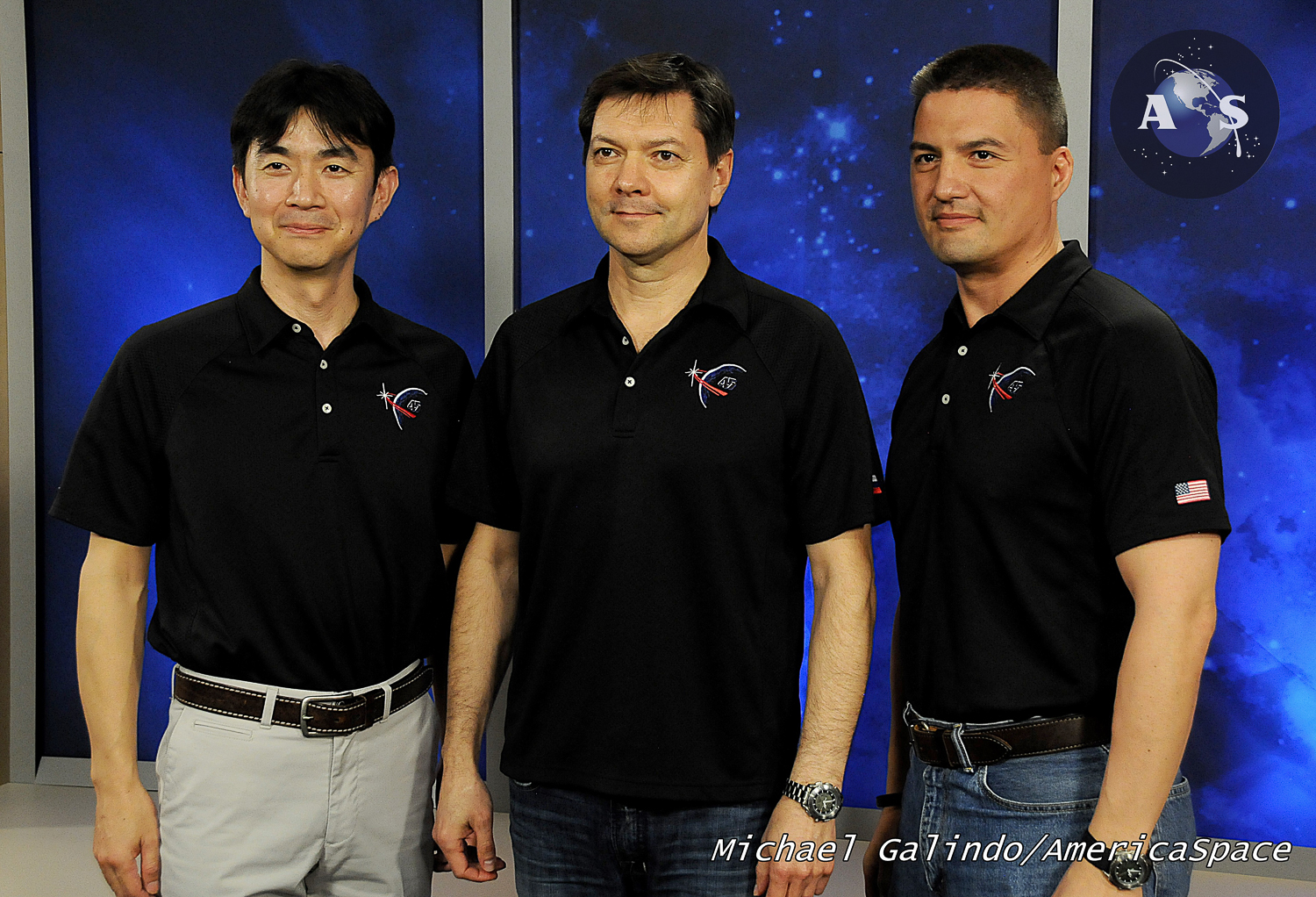
The Soyuz TMA-17M crew of Russian cosmonaut Oleg Kononenko, U.S. astronaut Kjell Lindgren and Japan’s Kimiya Yui are expected to return to Earth in three weeks’ time, touching down on the desolate steppe of central Kazakhstan at 7:10 p.m. local time (8:10 a.m. EST) on Friday, 11 December. An on-time landing is expected to produce a total duration for their Expedition 44/45 increment of more than 141 days, coincidentally almost equaling that of Expedition 1, the 15th anniversary of whose pioneering mission they observed whilst in orbit.
The three men—of whom Kononenko is wrapping up his third long-duration mission to the International Space Station (ISS) and will position himself as the world’s 13th most seasoned spacefarer—will alight on terra firma almost two weeks sooner than originally manifested. According to NASA and Roscosmos, the early return is being conducted in response to increasingly busy Visiting Vehicle (VV) traffic through December, notably the maiden voyage of Russia’s new Progress-MS unpiloted cargo ship.
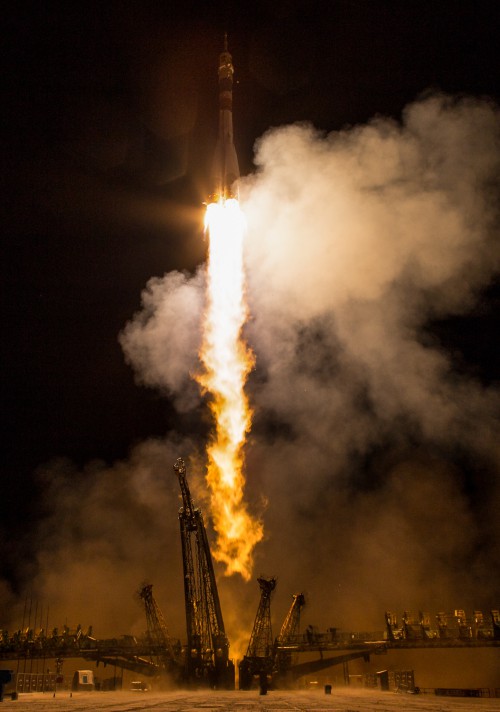
Launched from the Baikonur Cosmodrome in Kazakhstan last 22 July, the voyage of Kononenko, Lindgren and Yui had already been postponed by almost two months past its original 26/27 May launch target, principally due to the April failure of Russia’s Progress M-27M cargo vessel and subsequent booster inspections. As a result, their scheduled return to Earth was correspondingly moved back from 5 November to 22 December, in order to maximize the amount of on-orbit time for their Soyuz TMA-17M spacecraft. Upon docking smoothly at the Earth-facing (or “nadir”) Rassvet module of the ISS, about six hours after launch, Kononenko, Lindgren and Yui formed the second half of the Expedition 44 crew, which consisted of One-Year crewmen Scott Kelly and Mikhail Kornienko, commanded by spaceflight endurance world record-holder Gennadi Padalka. This crew had been launched from Baikonur aboard Soyuz TMA-16M in late March.
Their early weeks in orbit saw the arrival of the Japan Aerospace Exploration Agency’s (JAXA) fifth H-II Transfer Vehicle (HTV) “Kounotori” (“White Stork”), laden with supplies, and Yui became the second of his countrymen to oversee its rendezvous and berthing at the nadir port of the Harmony node on 24 August. With Kelly and Kornienko expected to remain aboard the ISS through March 2016, and Padalka due to return to Earth in September, the Soyuz TMA-18M spacecraft arrived in early September, carrying Russia’s Sergei Volkov, Kazakhstan’s Aidyn Aimbetov and the first Danish astronaut, Andreas Mogensen. This “direct handover” of crew members temporarily boosted the Expedition 44 population up to nine astronauts and cosmonauts for the first time in almost two years. On 11/12 September, Padalka, Aimbetov and Mogensen returned to Earth aboard Soyuz TMA-16M, leaving Volkov to join Kelly and Kornienko for the second half of their year-long mission. Padalka relinquished command of the space station to Kelly, who headed up Expedition 45 and became the first American to lead two ISS increments.
As expected, the records fell like ninepins for Kelly, as he continues to embark on the longest single space mission ever attempted by a U.S. citizen. Last month, he passed two critical milestones: firstly, he became the single most seasoned American spacefarer, eclipsing fellow astronaut Mike Fincke’s 381-day total, and secondly, he exceeded Mike Lopez-Alegria’s 215-day accomplishment for the longest single flight ever undertaken by a representative of the United States. Just a handful of days later, Kononenko, Lindgren and Yui celebrated the 100th day of their own increment—an event which they tweeted excitedly to their Earth-bound audience—and on 2 November the Expedition 45 crew and the entire ISS Program observed 15 years of continuous habitation of the multi-national outpost. The astronauts also brought eerie Halloween greetings and Lindgren honored the passing of Wyle Labs research scientist and astronaut instructor Victor Hurst IV with a poignant bagpipes performance of “Amazing Grace”. Together with Kelly, Lindgren also participated in two spacewalks, totaling just over 15 hours, to perform ISS upgrades and restore the P-6 Integrated Truss Structure (ITS) cooling system back to its original configuration, after several years of ammonia leaks and other problems.
Original plans called for a second direct handover of crew members next month, with Soyuz TMA-19M due to launch from Baikonur on 15 December, carrying Russian cosmonaut Yuri Malenchenko, U.S. astronaut Tim Kopra and Britain’s Tim Peake. A week later, it was intended that Kononenko, Lindgren and Yui would board their Soyuz TMA-17M spacecraft and return to Earth, concluding an increment of about 153 days. However, it became clear several weeks ago that their landing date was under consideration to be moved forward, in response to an anticipated intensity in Visiting Vehicle (VV) traffic to the ISS in the December-January period. As noted in a previous AmericaSpace article, Orbital ATK has its OA-4 Cygnus cargo mission primed for launch on 3 December, after which Russia would fly Soyuz TMA-19M, followed by the departure of its Progress M-28M freighter on 19 December and then launch the maiden voyage of its new Progress-MS on 21 December. With SpaceX also expected to return to the station with the launch of its long-awaited CRS-8 Dragon cargo mission—carrying the Bigelow Expandable Activity Module (BEAM) for installation onto the Tranquility node—in early January 2016, it was clear that a feverish few weeks of VV traffic lay ahead.
Of these visitors, Progress-MS is particularly noteworthy. A descendent of the fleet of non-reusable spacecraft, used by the Soviet and Russian space programs to resupply their Salyut 6 and 7 and Mir space stations, Progress has also flown more than 60 missions towards the ISS, all but two of which have succeeded in reaching their destination. Closely based upon the piloted Soyuz spacecraft in design and external appearance, the Progress-MS configuration carries an external compartment to launch up to four small satellites, has improved telemetry, autonomous navigation and control capabilities over its predecessors, a new digital radio, the upgraded “Kurs-NA” (“Course”) rendezvous system and better Micrometeoroid Orbital Debris (MMOD) protection. Present plans call for Progress M-28M—which has been in residence at the station’s space-facing (or “zenith”) Pirs module since the beginning of July—to undock on 19 December, thereby making room for the launch of Progress-MS (which has also received the ISS Program designator of “62P”) on the 21st and a docking on the 23rd.
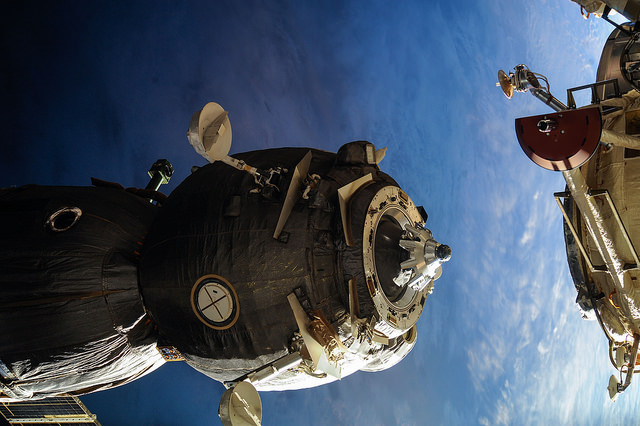
This has led to preparations to bring Soyuz TMA-17M and Kononenko, Lindgren and Yui home slightly earlier than intended. “It was moved forward to accommodate the adjustment to the 62P launch date to Dec 21,” NASA’s Rob Navias told AmericaSpace. Plans call for the outgoing crew to bid Kelly, Kornienko and Volkov farewell and hatches between the Rassvet module and spacecraft to be closed at about 1:25 a.m. EST on 11 December. After standard leakage and pressure checks of the spacecraft and their Sokol (“Falcon”) launch and entry suits, the crew—with Kononenko occupying the center seat, commanding the return to Earth, and flanked by Yui in the left-hand “Flight Engineer-1” position and Lindgren in the right-hand “Flight Engineer-2” position—will run through their standard pre-undocking procedures. The command to open hooks and latches will be issued at 4:46 a.m. EST, with physical separation of the spacecraft from the ISS expected to occur about 90 seconds later at 4:47:30 a.m. The spacecraft, which consists of the bell-shaped descent module for the crew, together with a spherical orbital module and cylindrical instrument module, will depart the vicinity of the space station at a initial rate of about 4.7 inches (12 cm) per second.
When Soyuz TMA-17M reaches a distance of about 50-65 feet (15-20 meters), at about 4:50:30 a.m. EST, Kononenko will oversee a short, eight-second “burn” of the spacecraft’s engines to increase the distance between the two vehicles. A little more than two hours later, at 7:17:31 a.m. EST, and having by now reached a distance of about 7.5 miles (12 km) from the ISS, the “deorbit burn” will be conducted to slow Soyuz TMA-17M by about 420 feet (128 meters) per second and commit it to a fiery descent back through Earth’s “sensible” atmosphere. The burn will last for four minutes and 41 seconds, by which time the spacecraft will inhabit an orbit of about 257.7 miles (414.8 km).
At 7:44 a.m. EST, some 27 minutes after the conclusion of the deorbit burn—and almost three hours since undocking from the ISS—the orbital and instrument modules will be jettisoned, leaving the descent module alone to endure the furnace of re-entry. By this stage of the flight, Kononenko, Lindgren and Yui will be at an altitude of 458,989 feet, which equates to about 86.9 miles (139.9 km). “Entry Interface”, the point at which the spacecraft is subjected to rapid heating of its surfaces, due to friction with steadily thickening atmospheric gases, will be reached at 7:47:35 a.m. EST, at an altitude of 329,068 feet, or 62.3 miles (100.3 km). Streaking back to Earth, and with the crew expected to endure peak loads of 4-5 Gs, Soyuz TMA-17M will appear meteor-like to observers on the ground.
Passing through the worst of re-entry heating, the command to open the parachutes will be issued at 7:56:03 a.m. EST, whilst at an altitude of 6.6 miles (10.7 km), and will involve the release of two “pilot” chutes, followed by the 258-square-foot (24-square-meter) drogue and finally the 10,764-square-foot (1,000-square-meter) main canopy. These will progressively slow the descent module, firstly to 180 mph (290 km/h), and finally to 16.4 mph (26.4 km/h). The latter is still too fast for a safe landing and, moments before ground impact, six solid-fueled rockets in Soyuz TMA-17M’s base will ignite. These will slow the spacecraft to 5 feet (1.5 meters) per second and serve to cushion the touchdown.
According to NASA, Kononenko, Lindgren and Yui will reach terra firma at 8:10:20 a.m. EST (7:10:20 p.m. local Kazakh time) on 11 December, about 101 minutes after local sunset. Assuming this landing schedule holds, it will leave Kononenko with a cumulative total across his three long-duration ISS expeditions of more than 533 days, placing him in 13th place on the list of the world’s most seasoned spacefarers. Lindgren and Yui will both wrap up their first career missions, with a total of slightly more than 141 days.
Thanks to Rob Navias and Dan Huot of NASA for their assistance in the preparation of this article.
Be sure to “Like” AmericaSpace on Facebook and follow us on Twitter: @AmericaSpace
.




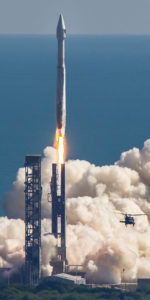
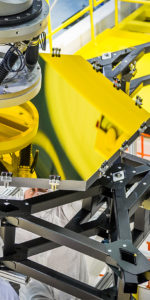
Russia’s Progress freighters are truly the first space freighter/tanker. Although, they have only suffered two failures to reach orbit, they are very dependable. One Soyuz crew vehicle failed a pressurization test during production. I look forward to the day when the U.S. Commercial Cargo/Crew vehicles are as dependable and able to provide crew & refueling services in LEO/BEO.
“I look forward to the day when the U.S. Commercial Cargo/Crew vehicles are as dependable and able to provide crew & refueling services in LEO/BEO.”
As good or great as the Roscosmos State Corporation’s Progress freighters are, I look forward to the day when American National and Commercial Cargo or Crew vehicles, and those similar vehicles of other nations, are ten times as reliable, or even much more than that, in getting to LEO “to provide crew & refueling services”.
Serious efforts at LEO spaceflight risk reduction remains an ongoing critical issue.
Hey, sometimes I get a 403 error when I visit this page. I thought you would want to know.